Microcontrollers have become an indispensable part of modern computing, embedded systems and even modern appliances. Thus, simply making them the heart of most electronic devices, especially those employing the use of specialized embedded systems. Their applications vary vastly from simple applications in house appliances, robotics, and automation to full-blown industrial applications. Hence, it is important to understand different types of microcontrollers>microcontrollers and how they can be used depending on the user case and the different technologies used in the microcontrollers.
Simply, a microcontroller is a programmable device that is integrated into a single chip, CPU, memory, timers, counter and Input and Output peripherals. They can also be referred to as single-chip microcomputers or minicomputers. By design, microcontrollers are developed to provide low-powered, simple and specialized niche solutions
In this article, we shall be discussing different types of microcontrollers, their abilities and why you could be compelled to choose one over the other.
Let’s have a closer look.
If you are looking through this article, there is a high chance that you are looking to start a project or develop a system using an embedded controller. Modern embedded systems are powered by microcontrollers, which are used in a variety of devices and applications. Microcontrollers offer the intelligence and control required for effective and novel functioning, from straightforward hobby projects to intricate industrial systems. Regardless of whether it’s a DIY project, a prototype or a professional product, the core or brain of any embedded electronic device is a microcontroller. The microcontrollers are used to receive input signals, process, and provide feedback output signals by running programs set by the user.
Although microcontroller is generally designed to be multipurpose, there are a wide variety of microcontrollers all with different, characteristics, features and functionalities making their preference variable depending on the application. These differences could be the clock speed, performance, power consumption, number of I/O, size and other features. Therefore, when selecting the right microcontroller for a certain project there are several factors that you must consider; cost, power consumption, size, feasibility of the project, number of I/O and other special features if any.
What are Microcontrollers and what are they used for?
Microcontrollers also known as mini-computers or single-chip computers are integrated circuits (ICs) that combine the functions of a microprocessor>processor>processor>processor, memory, and input/output peripherals onto a single chip. Microcontrollers are frequently employed in embedded systems, where they give diverse applications intelligence and control.
The most popular uses for microcontrollers are in the automation of electronic devices, robotics, and temperature control in various industries. Microcontrollers come in a variety of sorts, including 8-bit, 16-bit, and 32-bit models.
A large number of microcontrollers with various architectures and uses are available on the market. The existence of several types of microcontrollers and differing performance makes selecting the right microcontroller a very important part, thus there are several factors to consider cost, performance, clock speed, power consumption and the overall support of the microcontroller.
Features
Microcontrollers generally have common features as well as components and peripherals. As a systems designer or hardware engineer, it is important to understand the internal hardware design of the microcontroller and the architecture. These are the key components of any microcontroller:
- Microprocessor (CPU): All microcontrollers are built with microprocessors, central processing units, as the brains of the entire system. Their function is to execute instructions, process data and perform calculations. There are various technologies and architectures on which these CPUs are based, 8-bit controller, 16-bit controller and 32-bit controller.
- Memory: Microcontrollers often feature built-in memory, which includes read-only memory (ROM) or flash memory for storing programmes, often known as program memory and random-access memory (RAM) for temporary storage, also known as data memory. These memories store both the program instructions and data used by the microcontroller.
- I/O Peripherals: Microcontrollers may communicate with the outside world by using a variety of I/O peripherals. There are also specialised peripherals like analogue-to-digital converters (ADCs) or pulse-width modulation (PWM) controllers, as well as digital and analogue input pins, output pins for driving signals, communication interfaces (such as UART, SPI, and I2C), timers, and interrupts.
- Clock Source: Microcontrollers require a clock source to synchronize their operations. This can be an external crystal or oscillator or an internal clock generator.
- Digital to Analogue Converter (DAC) and Analogue to Digital Converter (ADC): To transform the output signal into the required changed form, these converters are quite helpful. For instance, data that is now available as analogue signals can be turned into digital data, and vice versa.
In this article, we are going to explore the top most popular microcontrollers based on their ease of use, popularity and how often they are used in featured products. It is also important to note that the communities behind these microcontrollers are also crucial and should be considered in this choice.
Here we go, in no particular order:
1. STM32F103C8T6
The STM32F10C8T86 is a popular microcontroller of the family STM32F103xx, a medium-density family of microcontrollers. These microcontrollers feature a high-performance ARM Cortex -M3 32bit RISC processor with a clock speed of 72MHz and a wide array of I/O peripherals. All STM32F103x series components, including CT86, offer up to two I2C and SPI, three general-purpose 16-bit timers, three USARTs, one USB port, and a CAN interface.
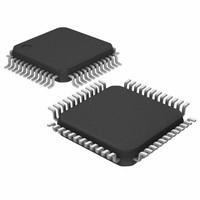
Figure 1: 1.STM32F103C8T6
The STM32 series is a product of STMicroelectronics, based on Arm Cortex-M cores and offers a broad range of microcontrollers with different performance levels. They are popular among professional developers for their reliability and wide selection.
2. STM8S103F3
STM8 series microcontrollers are comparable in size to ATtiny series microcontrollers and offer a high-performance 8-bit core and a variety of cutting-edge peripherals. There are four series in the collection: STM8S, STM8L, STM8AF, and STM8AL. The STM8S series is the most widely used MCU among all of these devices, and the STM8S103F3 is one of its most well-liked models.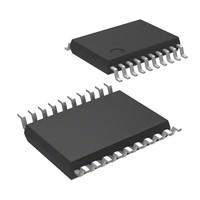
Figure 2: STM8S103F3P6
The 8K bytes of flash programme memory that the STM8S103F3 offers, together with real data EEPROM integration, an advanced core and peripherals, a 16MHz clock frequency, robust I/O, an independent watchdog with an independent clock source, and a clock security system, all contribute to the device's strong performance and overall system reliability.
3. ATmega328
The ATmega328 is arguably the most popular microcontroller in the world, having been used in the widest variety of boards and electronic circuits. The ATmega328p is one of the most common microcontrollers for designers and engineers. The microcontroller has also risen to prominence due to its use in Arduino boards. As the ATmega328 can be used without the bulk of the Arduino boards, it is a choice for many as it retains the ease of programming, community and all the advantages associated with the Arduino platform.
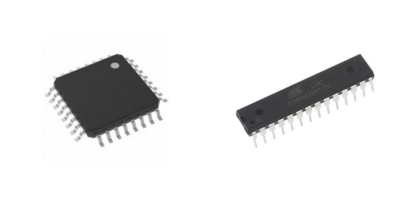
Figure 3: ATmega328p
The ATmega328 is a member of the ATmega series a product of the Atmel AVR microcontrollers. It is an 8-bit AVR microcontroller with read-write capabilities and 32KB ISP flash memory built on a modern RISC architecture. AVR microcontrollers are used in all of the original Arduino models, including the Uno, Leonardo, and Mega. The AVRs deserve considerable attention for 8-bit applications due to the enormous variety of libraries that are available for Arduino.
4. ATmega32U4
Much like the ATmega 328, the ATmega32U4 is a product of Atmel AVR microcontrollers. It is designed as a low-power microcontroller, based on an 8-bit AVR RISC microchip featuring 32KB program flash memory, 2.5 KB SRAM, and 1 KB EEPROM. The chip can reach up to 16 MIPS throughput at 16 MHz thanks to its ability to carry out strong instructions in a single clock cycle.
Similarly, just like the ATmega328, the ATmega32u4 is a popular microcontroller sharing the same Arduino community. It is featured in several development boards such as Arduino Pro Micro, Arduino Leonardo, other Arduino clones and others.
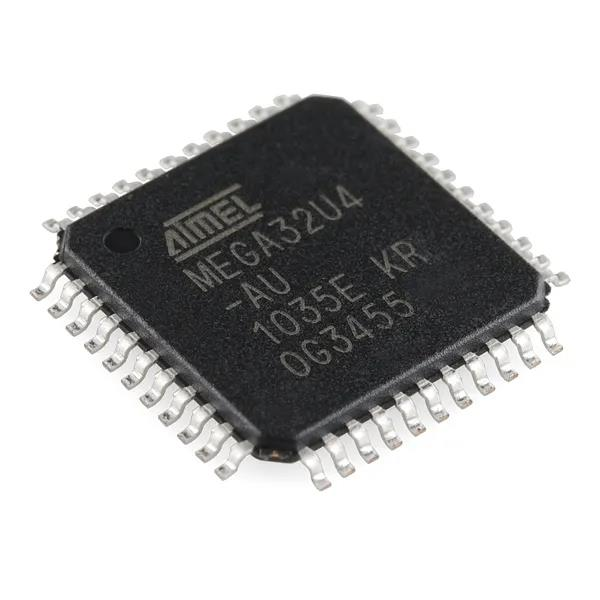
Figure 4: ATmega32U4
5. ATtiny85
The ATtiny85 and the ATtiny series microcontroller are popular and recognizable due to their small form factor. The ATtiny85 is an 8 bit-RISC-microcontroller that is a part of the AVR family, the RISC CPU can be attributed to its high performance. It is mostly used as the preferred choice for small projects, or where the design is constrained by size and can work with a limited number of GPIOs.
Although there are other microcontrollers in this series that have offered significant upgrades and improvements in power efficiency and performance, the ATtiny85 is reserved as the most preferred. This hails from its familiarity with most designers and engineers, who have built with it for years.
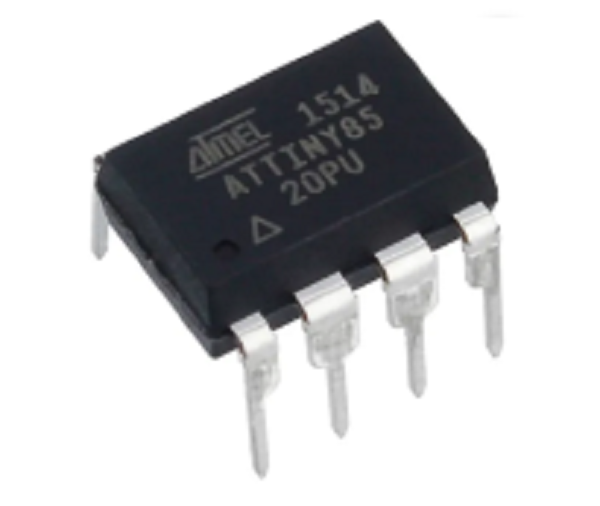
Figure 5: ATtiny85
Some of the common boards that use the ATtiny85 include Mini ATtiny85 USB and Digispark ATtiny85
6. ESP8266
The ESP8266 is a microcontroller designed and developed by Espressif Systems, as a low-cost Wi-Fi microchip with a full TCP/IP protocol stack and microcontroller capabilities. It is undeniably the most popular microcontroller. It is without a doubt one of the most significant microcontrollers of the last ten years and a key example of the present trend of microcontrollers with built-in networking capabilities.

Figure 6: ESP8266
The MCU was then soon transformed into several different iterations. It was first utilised as a Wi-Fi module for a microcontroller but rapidly migrated to modules like the ESP-12e. The ESP-12e was used as the foundation for many initiatives and goods.
The many ESP8266 variants are used in more than 100 development boards. Some of these boards, to name a few, are NodeMCU DevkIT, Wemos D1, Wemos D1 Mini and ESP8266
7. ESP32
Since its release a few years ago, the esp32, an improvement to the ESP8266, has seen a lot of support and popularity. A system on a chip microcontroller with built-in Wi-Fi and dual-mode Bluetooth, it is also inexpensive and low-power. The ESP32 microcontroller, gained popularity for its built-in Wi-Fi and Bluetooth capabilities, making it suitable for the Internet of Things (IoT). It features built-in antenna switches, RF baluns, power amplifiers, low-noise receive amplifiers, filters, and power management modules. It utilises the Tensilica Xtensa LX6 CPU in both dual-core and single-core varieties.
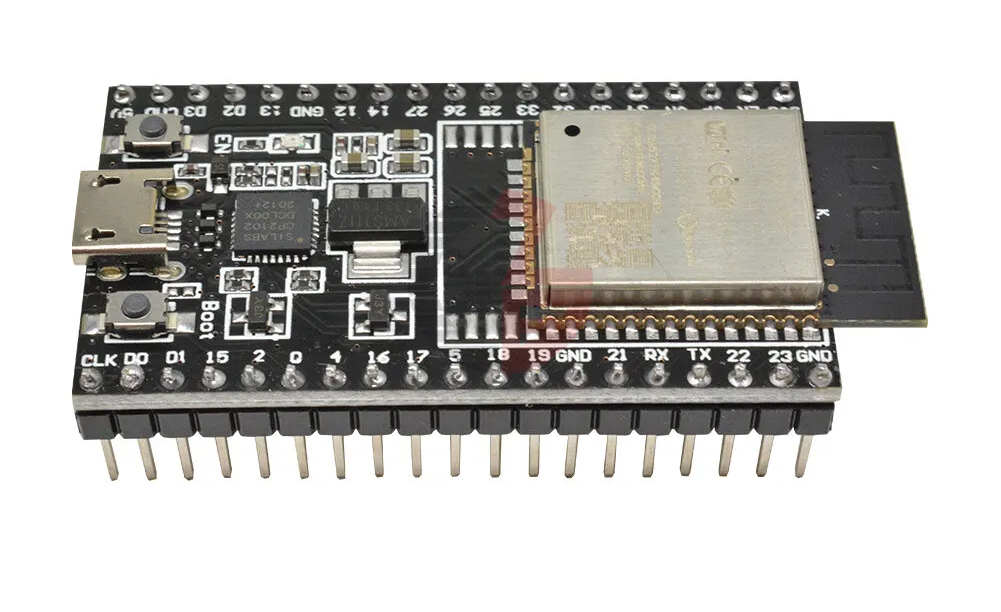
Figure 7: ESP32-DevKitC
The ESP32 has applications mostly in smart technology like PLCs (programmable logic controllers), smart locks, thermostats, and surveillance cameras because the low-level device drivers, wireless protocol stacks for Wi-Fi, and Bluetooth are already installed in this module.
Like the ESP8266, ESP32 also has seen development into boards such as HUZZAH32, ESP32-DevKitC, NodeMCU-32S and ESPduino32.
8. LPC1768
NXP's LPC series of microcontrollers offer a wide range of options, featuring Arm Cortex-M cores with various performance levels. They are known for their high-speed capabilities and extensive peripheral integration.
The LPC1768 is a low-power Cortex®-M3 microcontroller intended for embedded applications. It has a high degree of integration and uses less power at up to 100 MHz of frequencies. It is a high-performance microcontroller that has peripherals like an Ethernet MAC, a USB Device/Host/OTG
interface, an 8-channel DMA controller, and 4 UARTs, among others. It also has up to 512 kB of flash memory and 64 kB of data memory.
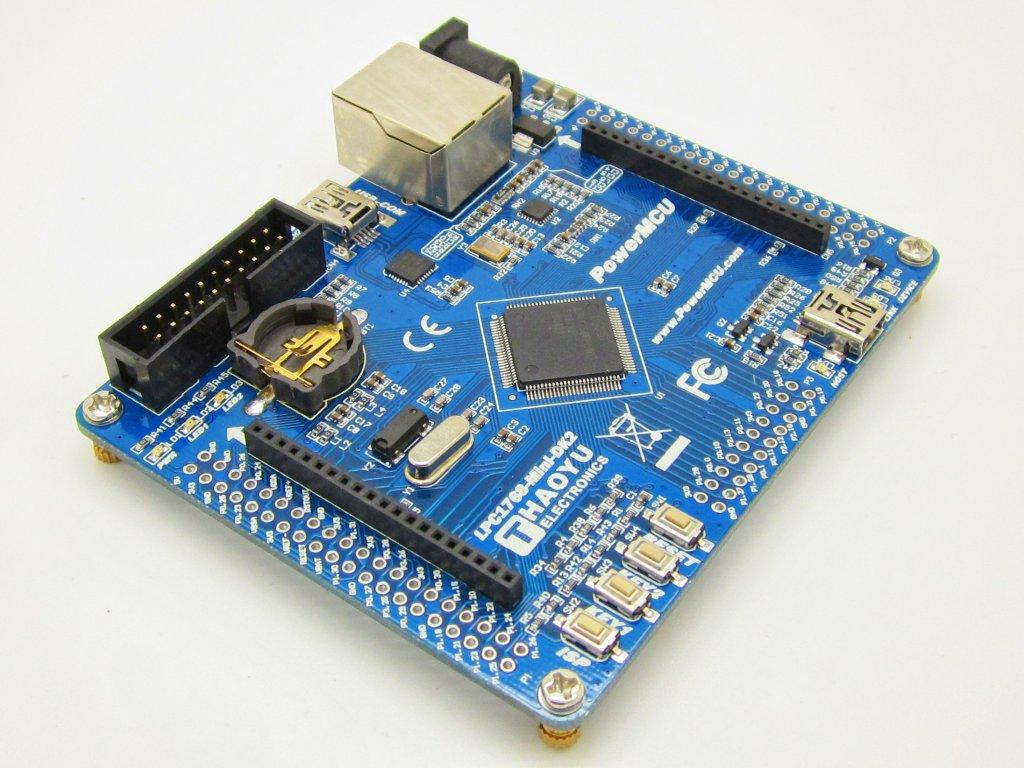
Figure 8: LPC1768-Mini-DK2 Development Board
9. MSP430G2452
The MSP430G2452 from TI is now the most well-known member of the MSP430 family of microcontrollers, which is thought to have some of the most cutting-edge microcontrollers. Texas Instruments MSP430 series is renowned for its ultra-low-power consumption, making it suitable for battery-powered applications. They are often used in portable devices and wearables.
The Texas Instruments MSP430G2452 is a potent and reasonably priced microcontroller built on a 16-bit RISC CPU.
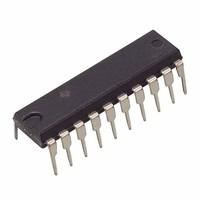
Figure 9: MSP430G2452
10. PIC16F877A
In the PIC line of MCUs, the PIC16F877A can be considered the most widely used 8-bit microcontroller. PIC microcontrollers, manufactured by Microchip Technology, have a long history and are known for their low power consumption, extensive range of options, and availability of development tools. The PIC18F877A is one of the most popular microcontrollers of this family.
The PIC16F877A is unquestionably still among the most widely used microcontrollers in the world, despite the opinion of some who believe it to be outdated. Although PIC16F877A is thought to be the microcontroller that beginners who use PIC for embedded development will select in practice, it is still their chosen microcontroller once they become professionals.
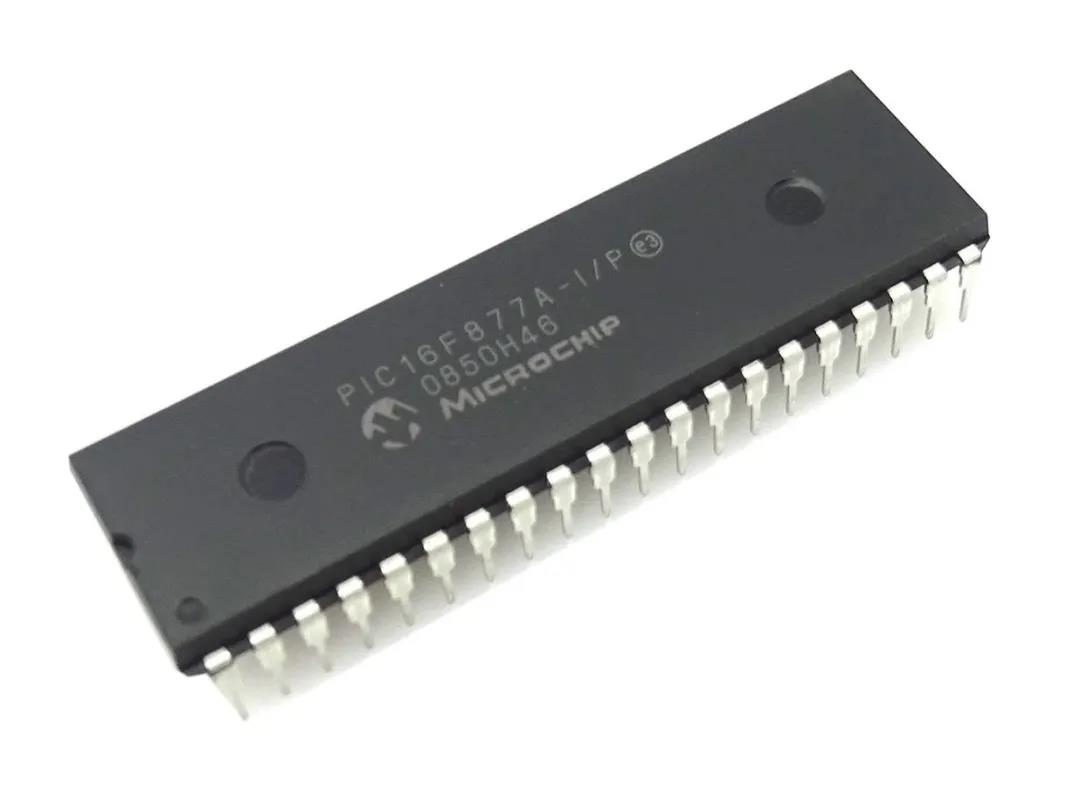
Figure 10: PIC16F877A
The PIC16F877A has 40 legs and 5 ports from A to E. Three timers are included; two are 8-bit timers and one is 16-bit. The PIC16F877A microcontroller's code can be written and erased indefinitely thanks to flash memory technology. Additionally, the PIC16F877A microcontroller has an EEPROM, which is used to permanently store a small quantity of data.
Conclusion
Microcontrollers are crucial integrated circuits that run many different electronic systems and devices. In this article, leading rivals like the Arduino, STM32, and MSP430 series were examined in relation to the most recent developments in microcontroller technology. These microcontrollers have special advantages that suit various applications. Developers may produce creative solutions for consumer electronics, Internet of Things (IoT) devices, and industrial applications by understanding their features, such as processing power, memory, and networking options. Microcontrollers continue to play a significant role in moulding embedded systems' future as technology develops, making it essential for developers to make the proper choice to maximise their potential.





